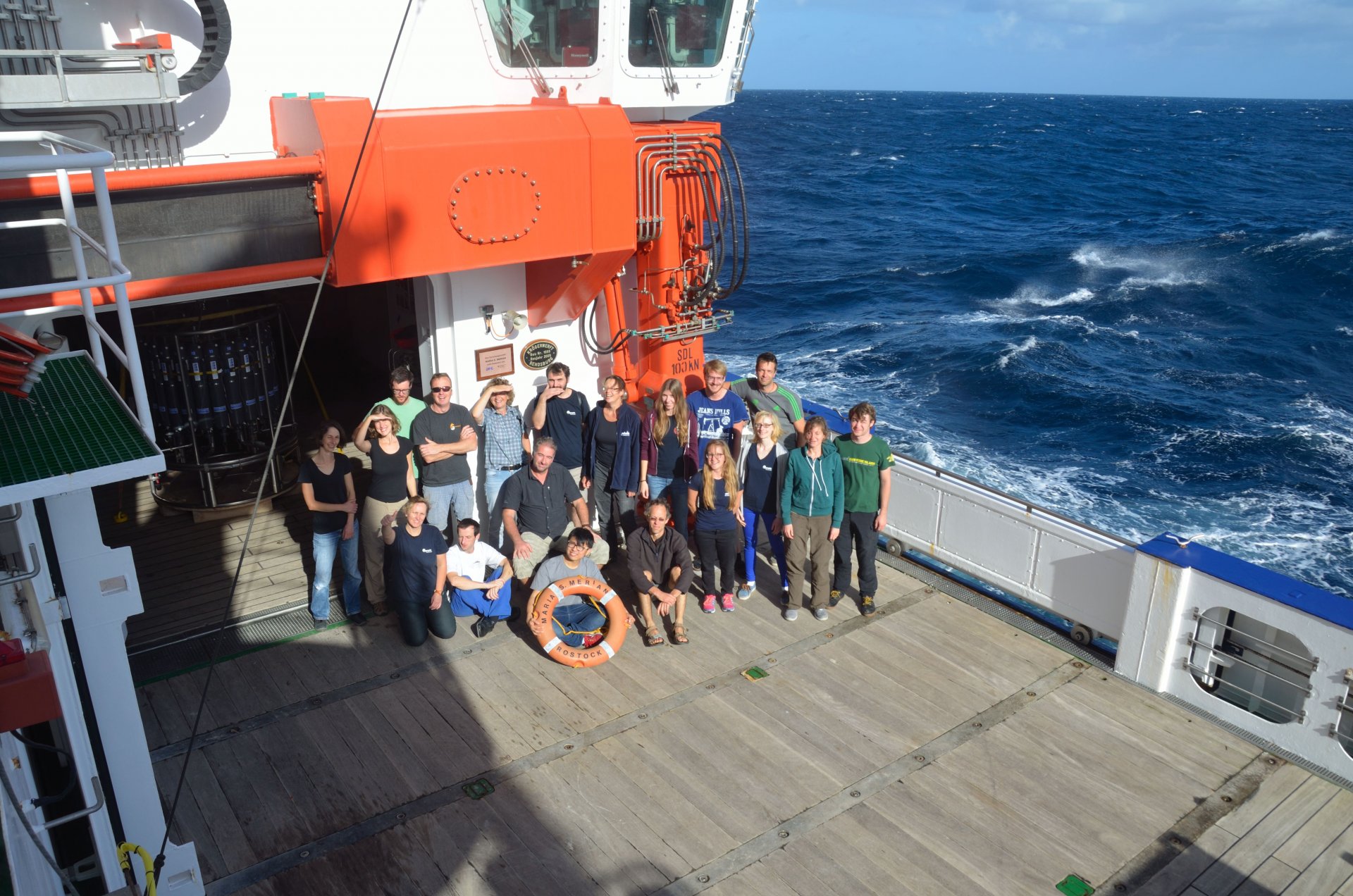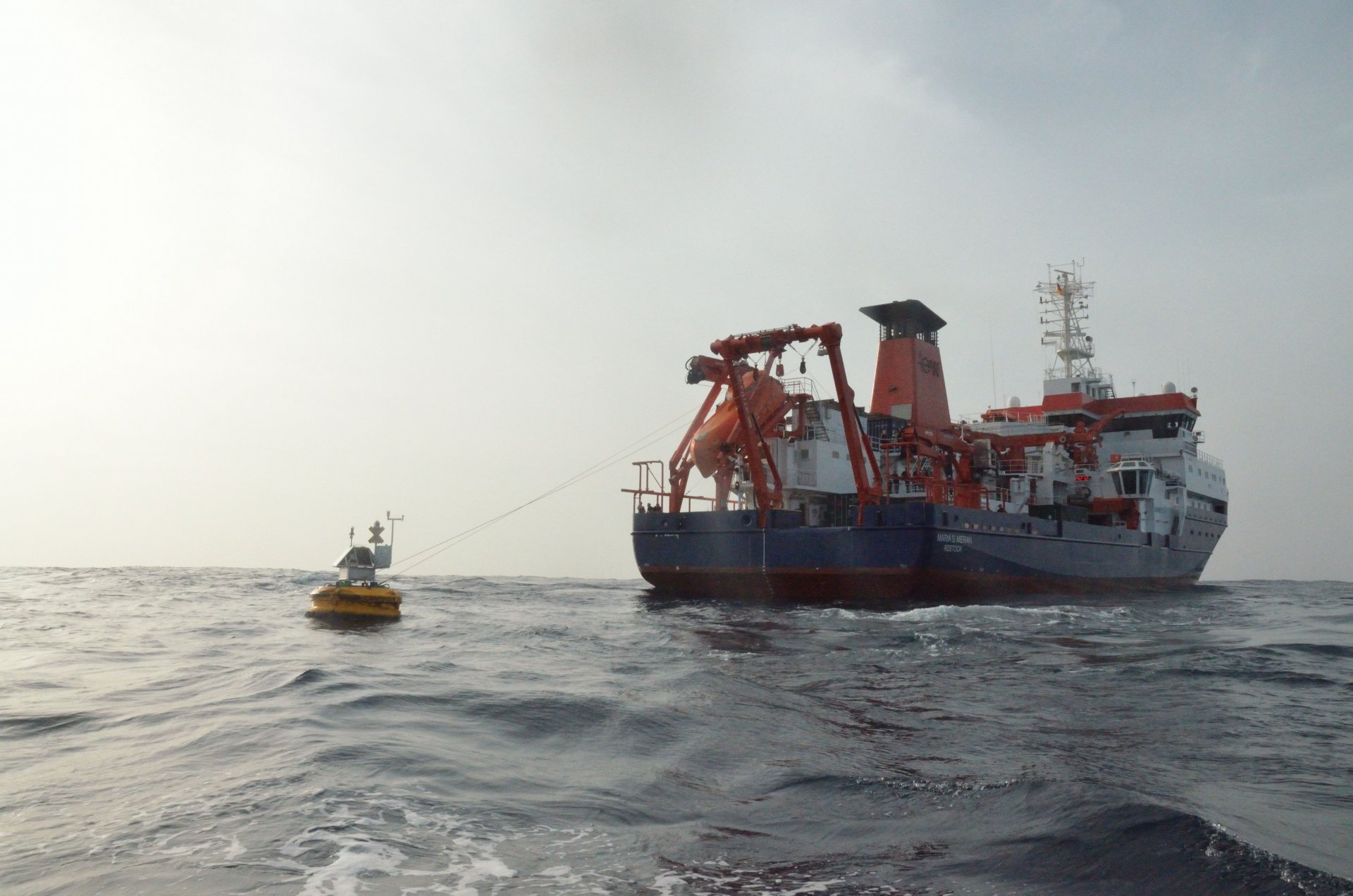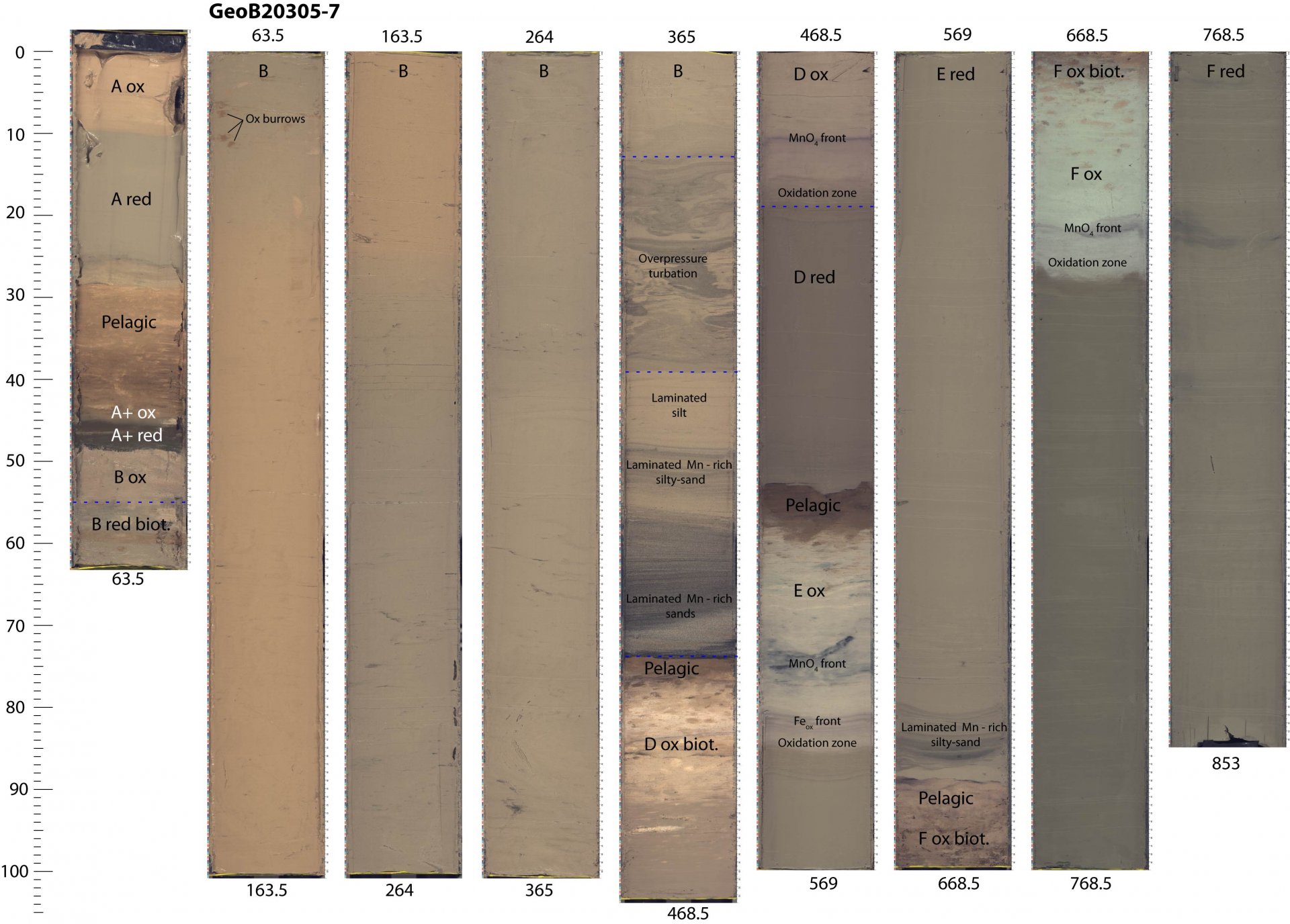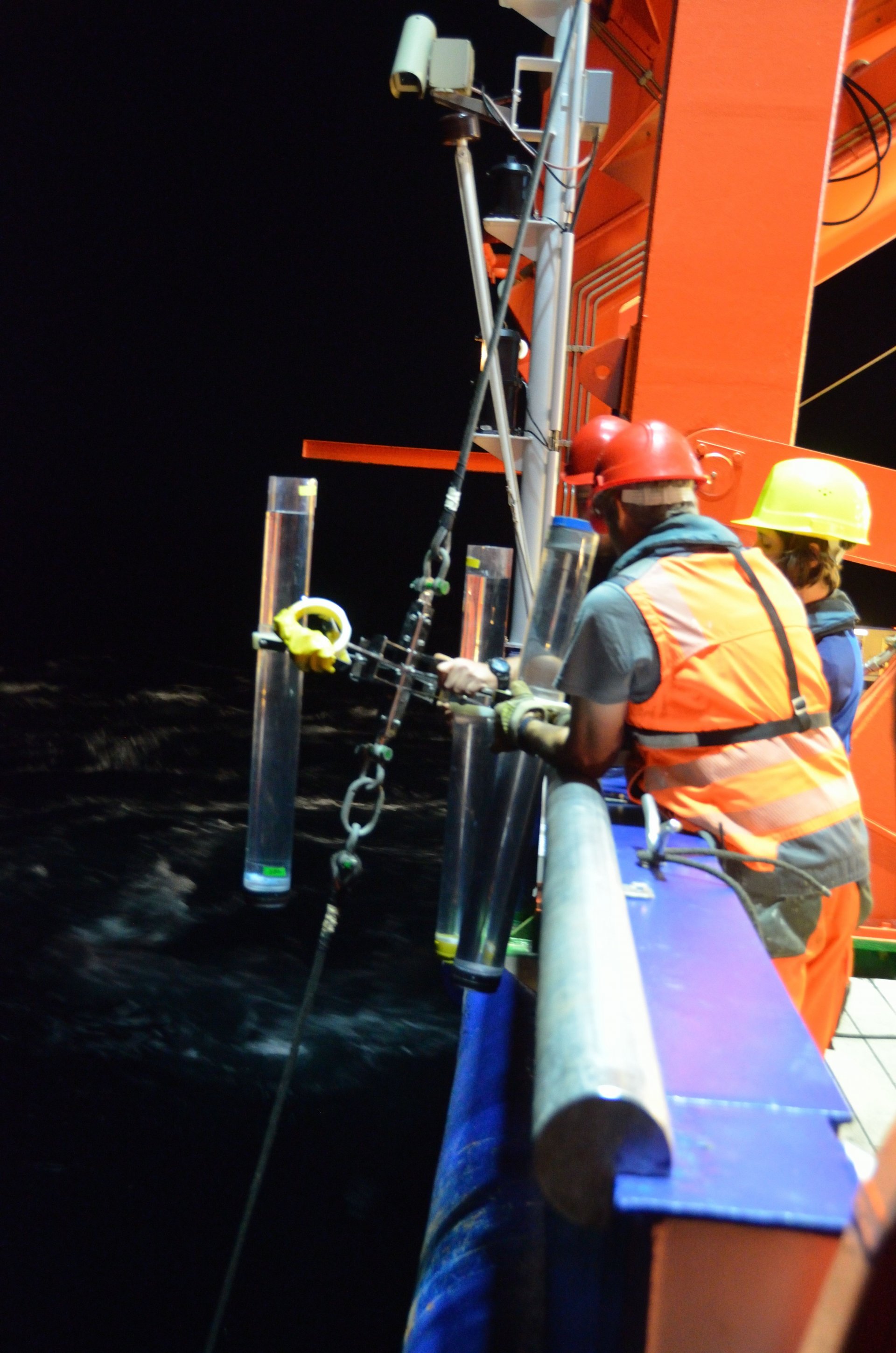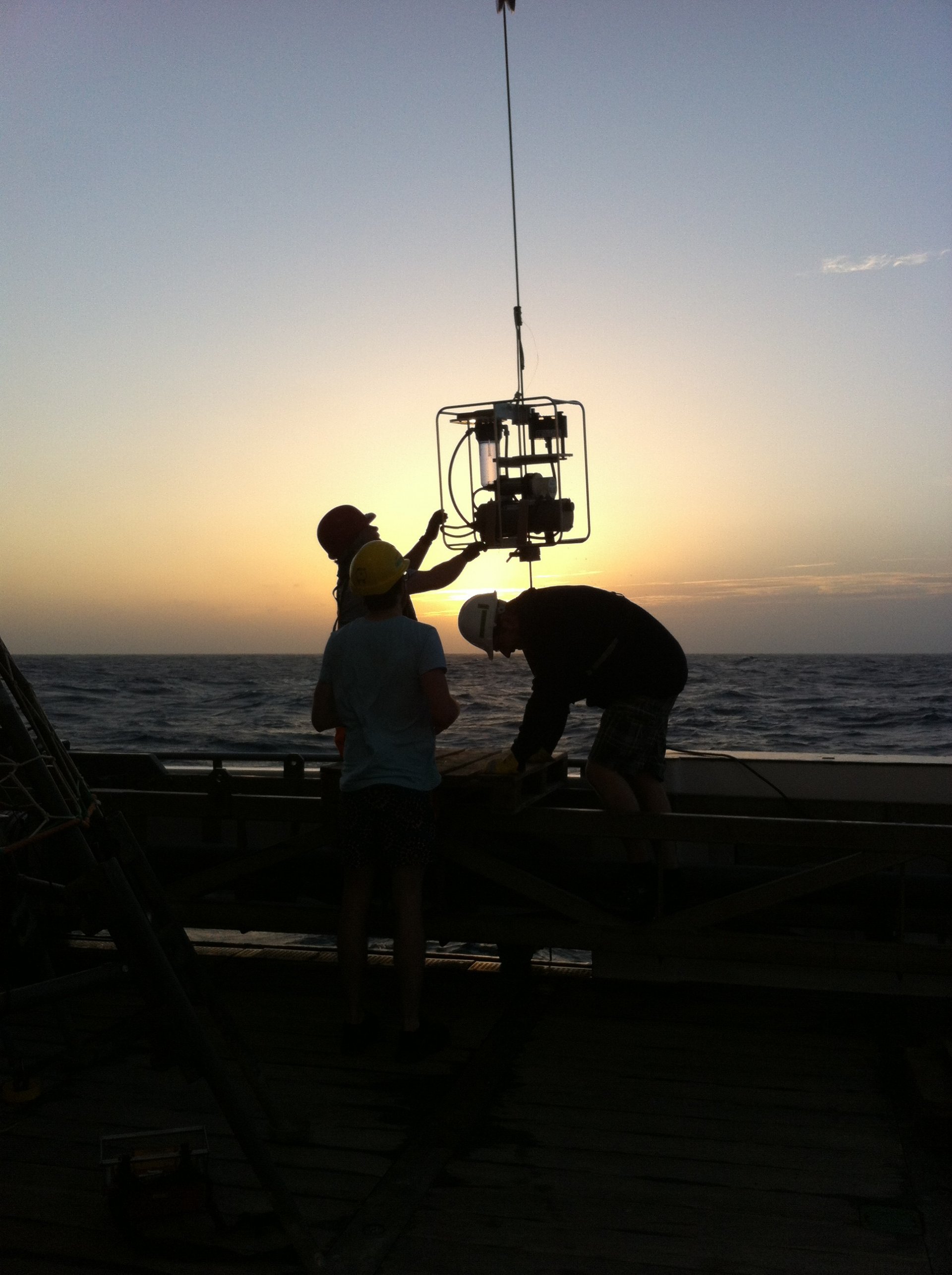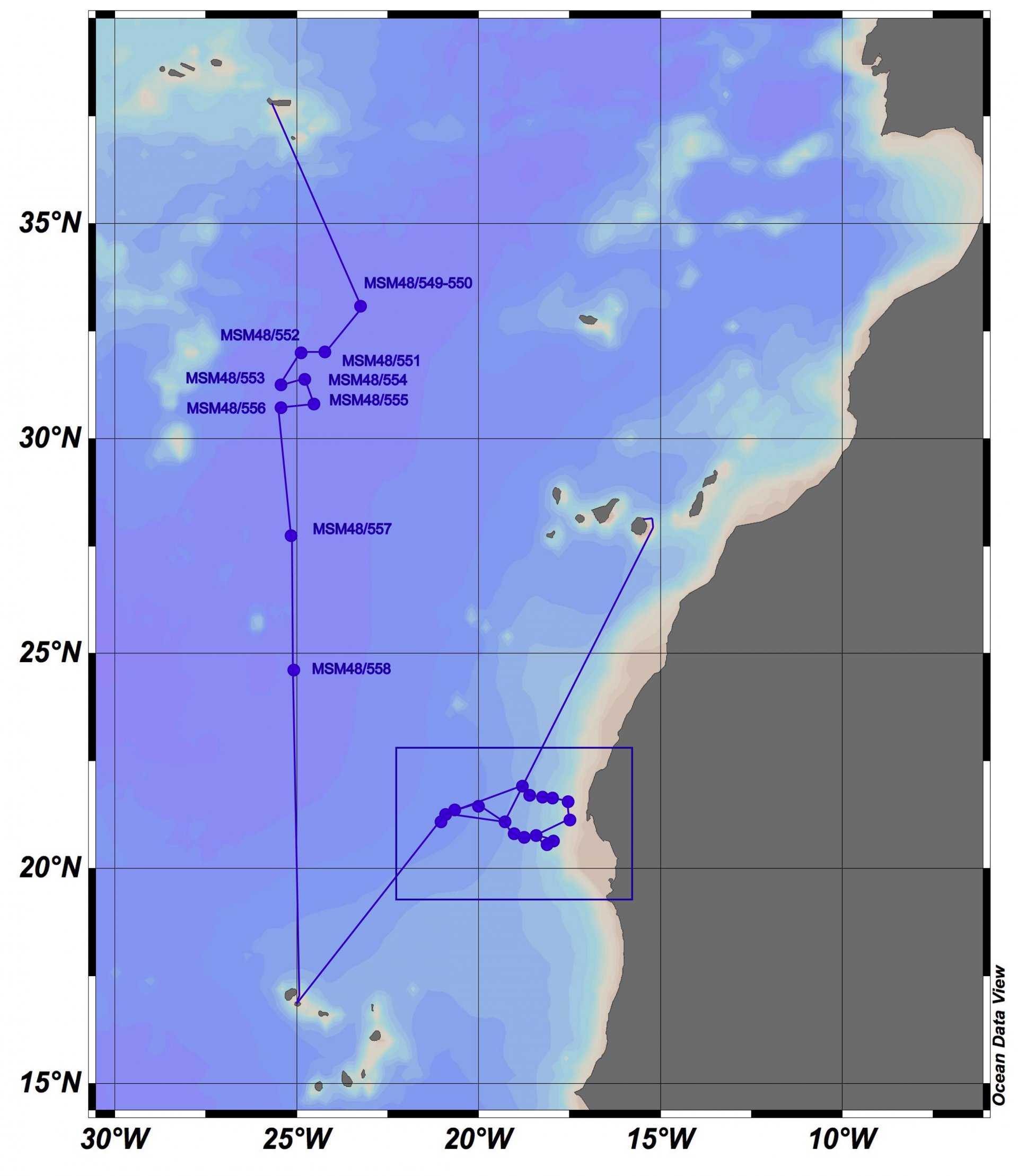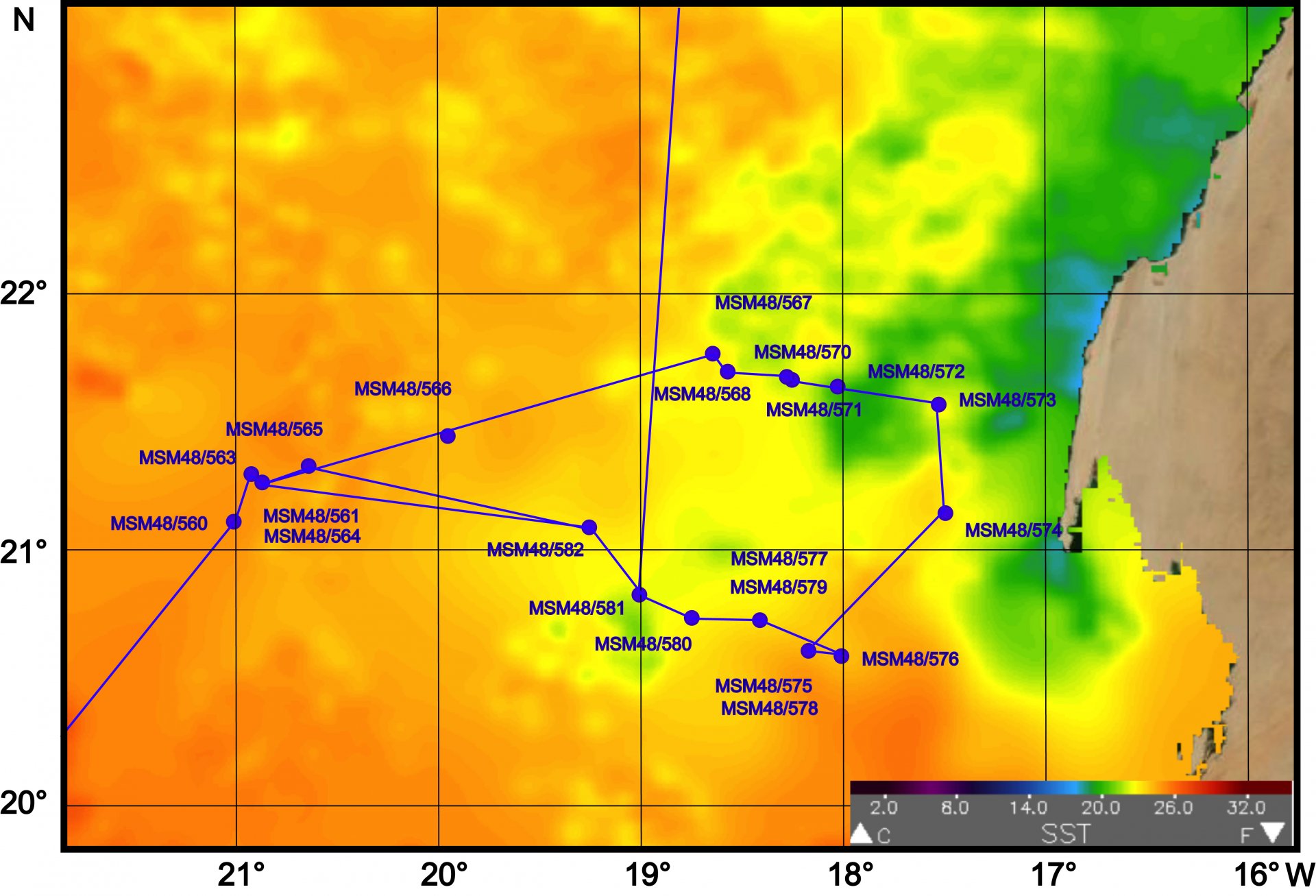- Startseite
- Karin Zonneveld
- Expeditions
- MSM48: ADOMIS
MSM48: ADOMIS
The scientific activities carried out during cruise MSM 48 ADOMIS: Aerobic Degradation of particulate Organic Matter and benthic microbial turnover rates reflecting ocean redox conditions off NW Africa were carried out as part of six different DFG and EU funded research programs that have a strong common need for samples and data from the region off NW Africa and the Madeira Abyssal Plain. The activities of the cruise focussed on several aspects of the carbon cycle namely the process of bioproduction in the upper water column and the relocation and degradation of organic matter during the settling process, at the sediment water interface and in downcode sediments. Research activities in these programs are being carried out within a close cooperation framework of research teams of the Centre of Marine Environmental Research (MARUM) at University of bremen and the Royal Dutch Institute of Sea Research (NIOZ).
Research activities on the Madeira Abyssal Plain focussed on the collection of unique turbiditic sediment deposits, especially of the so called f-turbidite. These sediments are unique as they are composed of homogeneous organic rich turbiditic layers of which the upper part is oxidized leaving the imprint of a so called “fossil oxidation front”. With an extremely successful coring program the f-tubidite could be recovered at six locations. At these stations three cores were collected of which one is immediately frozen to allow specialized organic-geochemical research at the MARUM, one core was opened and sampled immediately for incubation experiments and organic-geochemical research. The last core was thoroughly sealed and will be opened under low oxygen conditions in Bremen to avoid oxidation and alteration of the primary signals. In total 140 m of core material could be recovered.
Studies on the upper water column were carried out along a North-South transect from the relatively cold-nutrient rich southern rim of the Azores frontal system towards the warm, nutrient poor open ocean waters of the central Atlantic Ocean. Along this transect dust and water sampling program was successfully executed on 6 Stations.
Research activities in the Cape Blanc area were carried out along two onshore-offshore transects that covered strong gradients of bottom-water oxygen and upper water nutrient conditions. The region off Cape Blanc is characterized by strong upwelling and the presence of nepheloid layers in the water column and just above the ocean floor. The archaea, microbial and planktonic composition of the upper water column and nepheloid layers as well as degradation processes that occur along active oxidation fronts could be sampled and studied on 12 different locations. The composition and rate of downward flux of organic particles in the upper water column could be studied during three deployments of a floating marring system.
Throughout the cruise atmospheric dust has been collected by dust samplers. Furthermore, the dust collecting buoy “Carmen” deployed by the Netherlands Institute of Sea research could successfully be collected, surfaced on board and re-deployed on its original position.
